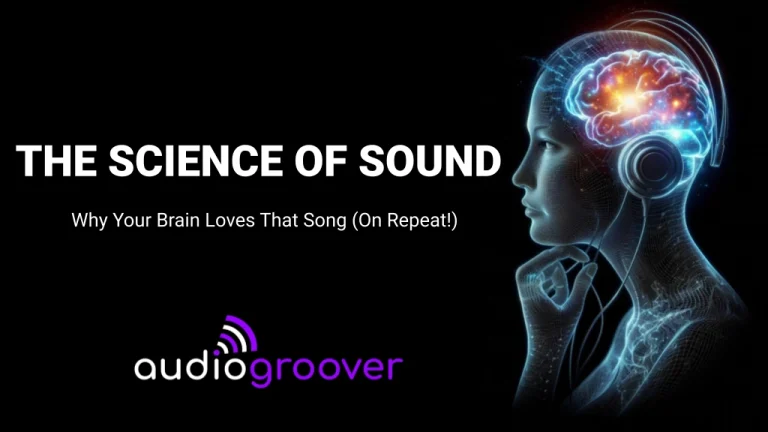Have you ever found yourself hitting repeat on a song for the tenth time, completely lost in its rhythm, while your friend in the passenger seat is subtly reaching for the radio dial? Or perhaps you’ve been the one wondering, “What is everyone hearing in this?”
It’s a universal experience: the profound, almost magnetic pull of certain musical pieces that feel like they were made just for you, contrasted with others that simply fall flat. Why does some music become an “infectious earworm” we can’t get enough of, while other equally popular tracks leave us cold? The answer lies in a fascinating interplay of psychology, neuroscience, and cultural factors that shape our individual musical worlds.
Let’s dive into what makes a song stick – or not.
The Anatomy of an “Infectious” Track: How Music Hooks Your Brain
The songs you can listen to on repeat often share specific structural features designed to captivate your brain, sometimes leading to the delightful (or maddening) phenomenon of an “earworm” (scientifically known as Involuntary Musical Imagery, or INMI).
- The Goldilocks Zone of Repetition: Truly “sticky” songs master the art of repetition. They repeat key phrases, melodies, or rhythmic patterns just enough for your brain to easily process and remember them. This predictability triggers the release of dopamine, our brain’s natural “feel-good” chemical, creating a sense of pleasure and reward. However, they also introduce subtle variations or shifts that prevent boredom, keeping your brain engaged without becoming fatigued.
- Contiguous Repetition & Predictability: Fragments of music that repeat immediately and consistently, like a memorable chorus or a catchy riff, are highly effective at embedding themselves in our minds. Our brains love patterns, and clear, repeated patterns are easier to learn and anticipate.
- Processing Fluency: Familiarity Breeds Liking: The more familiar a song, genre, or musical style becomes, the easier it is for our brains to process. This “processing fluency” is inherently pleasurable. Each repeated listen strengthens neural pathways, making the song feel more comfortable and enjoyable, often increasing our liking for it even if we didn’t love it initially.
- Simple Yet Distinctive Melodies: Many catchy tunes feature straightforward, easy-to-sing melodies and a lively tempo. Yet, they often contain a unique twist – an unexpected interval, a quirky rhythmic syncopation, or a distinctive sound – that makes them stand out from the crowd and linger in our memory.
Your Unique Soundtrack: Why Taste is So Personal
Beyond the music’s structure, the biggest differentiator in musical preference is you. Your individual psychology, life experiences, and even your personality profoundly shape what sounds “good” to your ears.
- Emotional Resonance & The Dopamine Hit: Music is one of the most powerful mood-altering tools we possess. We often gravitate towards and repeat songs that reliably evoke a specific emotional state we crave – be it euphoria, calm, motivation, or even a comforting melancholia. The song becomes a dependable source of emotional payoff, a sonic shortcut to a desired feeling.
- Music as Identity: Our playlists are often extensions of our self-identity. We use music to express who we are, what we believe in, and what communities we belong to. A song or genre that deeply resonates with your sense of self might be dismissed by someone else who doesn’t share those same values or identity markers. It’s not just about the notes; it’s about the narrative.
- The Nostalgia Factor (The “Reminiscence Bump”): Our musical tastes are heavily influenced by the music we encounter during significant periods of our lives, particularly during adolescence and young adulthood. Songs heard during these formative years become indelibly linked to powerful memories and emotions. A track that feels “infectious” to you might be tied to a profound nostalgic experience that others simply don’t share, giving it an almost sacred quality for you.
- Personality Traits and Preferences: Research shows fascinating links between our personalities and our musical preferences:
- Openness to Experience: Often associated with a love for complex, diverse, and unconventional genres like Classical, Jazz, or Folk.
- Extraversion: Tends to correlate with energetic and upbeat music such as Pop, Electronic, or Hip-Hop.
- Empathy vs. Systemizing: Individuals who are highly empathetic often prefer mellow, emotionally rich music, while those who are more analytical and drawn to systems may gravitate towards structurally intricate genres.
The Role of Culture and Exposure
Finally, the world around us, and how much we’re exposed to certain sounds, plays a significant role in shaping our preferences.
- Cultural Familiarity: What sounds “harmonious” or “melodic” is often culturally determined. A chord progression that feels perfectly balanced to a Western-trained ear might sound unremarkable or even dissonant to someone from a different musical tradition. We inherently prefer sounds that align with our cultural conditioning.
- The Mere-Exposure Effect: This psychological phenomenon states that we tend to develop a preference for things simply because we are familiar with them. A song you hear frequently on the radio, in movies, or on social media is more likely to become liked over time, simply through repeated exposure, regardless of its inherent musical merit. Our brains learn to predict and therefore appreciate it.
The Beautifully Subjective World of Music
Ultimately, the reason some music is “infectious” to you and “crap” to someone else isn’t about objective quality; it’s about a deeply personal and complex interaction between the music’s structure and your unique brain, life experiences, and cultural context.
So, the next time you find yourself lost in a song on repeat, or questioning someone else’s playlist choices, remember that you’re experiencing the beautiful, intricate tapestry of human perception. There’s no right or wrong answer when it comes to what moves you – just the magic of sound meeting self.


